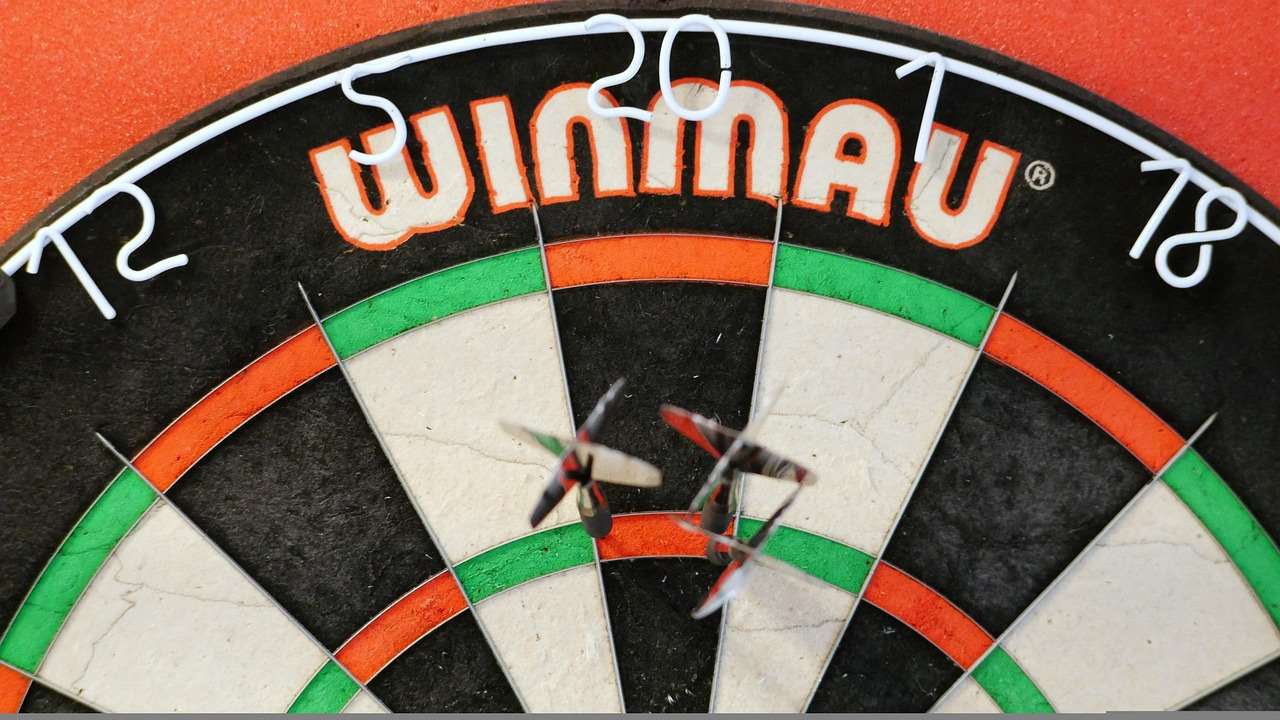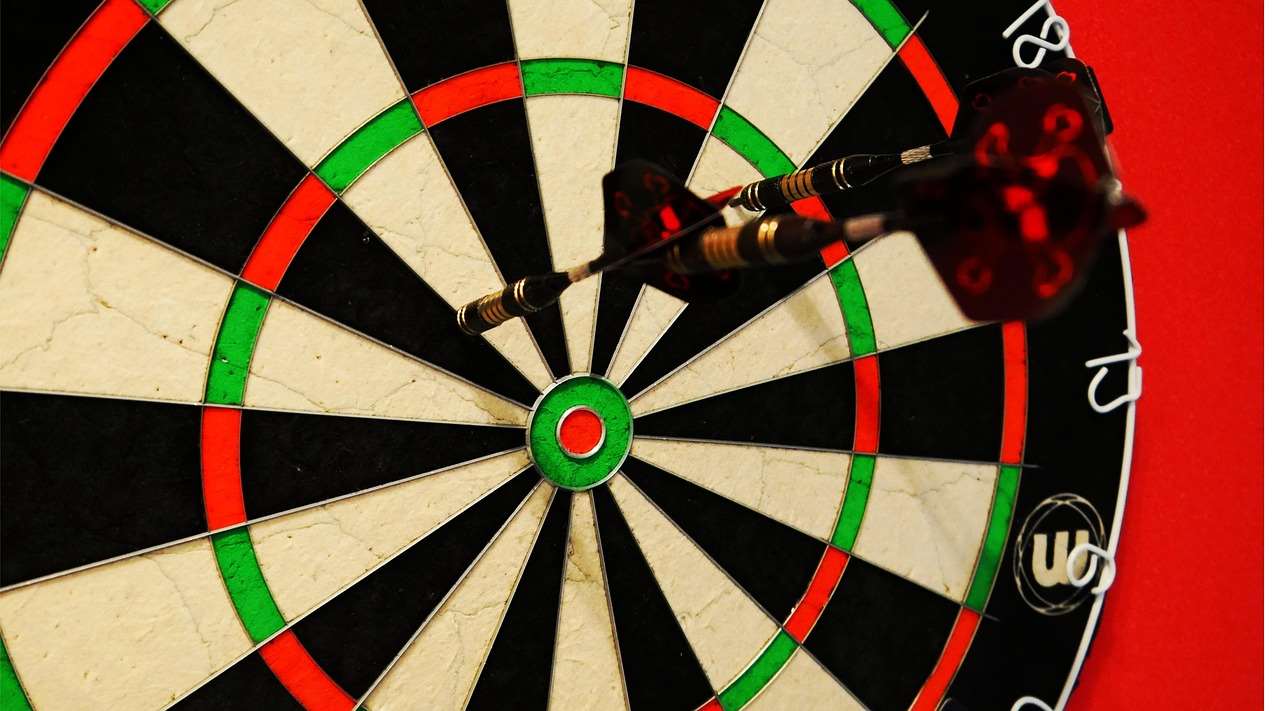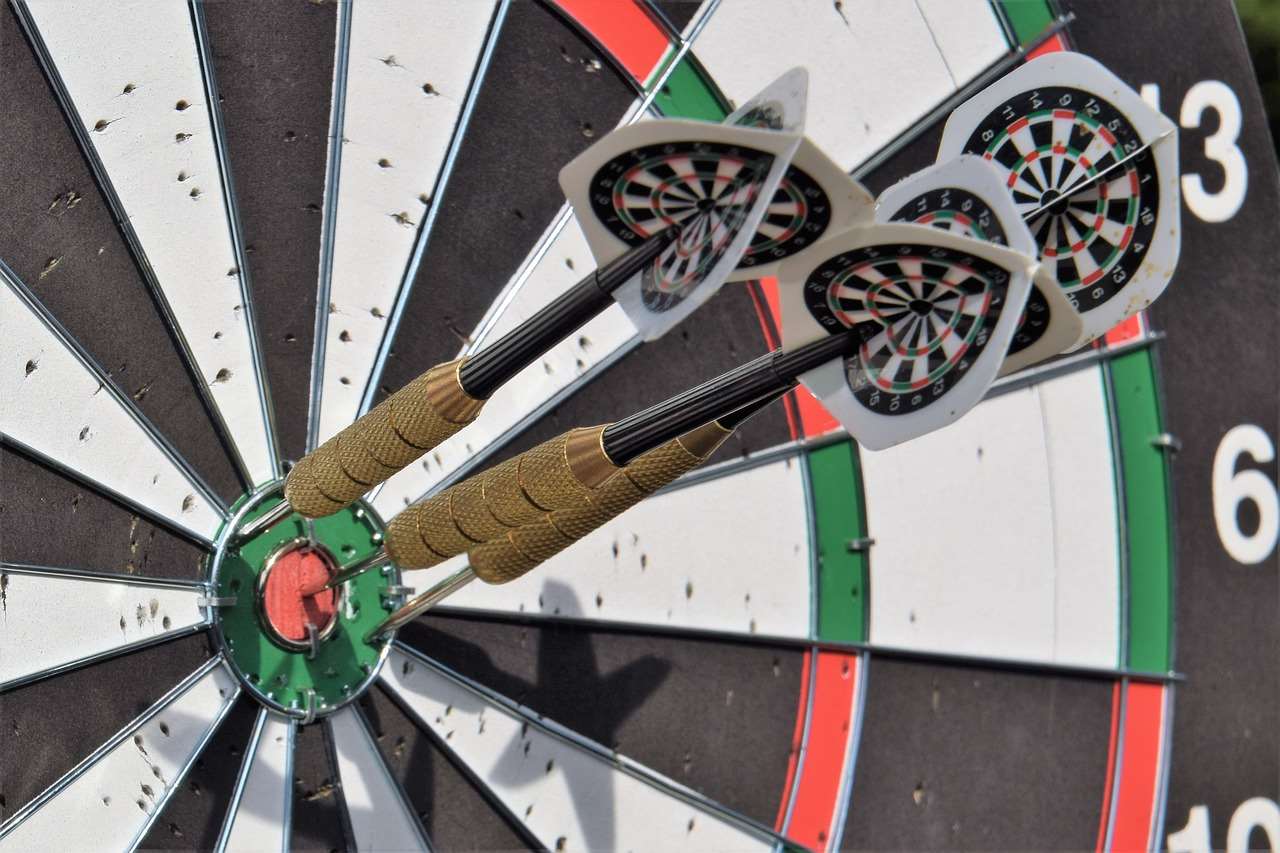Want to spice up your darts night? Adapting rules for ‘Scram’ darts game is the perfect way to add challenge and fun for players of all skill levels. This article will guide you through various modifications to this classic game, creating exciting and competitive experiences.
⚠️ Still Using Pen & Paper (or a Chalkboard)?! ⚠️
Step into the future! The Dart Counter App handles all the scoring, suggests checkouts, and tracks your stats automatically. It's easier than you think!
Try the Smart Dart Counter App FREE!Ready for an upgrade? Click above!
Why Consider Adapting Rules for ‘Scram’ Darts Game?
The traditional game of ‘Scram’ is a fantastic way to introduce beginners to darts while still providing a competitive edge for experienced players. However, sticking to the same format can sometimes become repetitive. By adapting the rules, you can:
- Increase the challenge and excitement for seasoned players.
- Level the playing field between players of different skill levels.
- Introduce new strategic elements to the game.
- Keep the game fresh and engaging for long-term enjoyment.
Ultimately, adapting rules for ‘Scram’ darts game allows you to tailor the game to your specific group’s preferences and skill levels, maximizing the fun for everyone involved. Consider exploring creative dart rules for parties and social gatherings for more inspiration.

Modifying the Attacker’s Objective
In standard ‘Scram,’ the attacker’s primary goal is to close out all the numbers. Let’s explore some ways to make this more challenging:
Introducing Point Targets
Instead of simply closing out the numbers, require the attacker to reach a specific point threshold. For instance, the attacker must score at least 100 points after closing all numbers. This forces strategic targeting beyond just hitting each number once. This will also help with Basic Darts Fundamentals for Beginners.
Targeted Checkout
Instead of closing any number in any order, the attacker must close them out in a specific sequence. You could assign point values to each number and the attacker must reach a set number of points, or have them close in ascending or descending order. This adds a layer of planning and precision to the game.
Limited Darts Per Number
Restrict the number of darts the attacker can throw at each number. For instance, they only get three darts per number. This encourages careful aiming and reduces the chance of lucky hits.
Modifying the Defender’s Role
The defender’s role in ‘Scram’ is to rack up points before the attacker closes all the numbers. Here are some ways to make their defense more strategic:

Point Deduction for Closed Numbers
Implement a rule where the defender loses points if the attacker closes a number they’ve already scored on. This encourages the defender to spread their points across different numbers, making it harder for the attacker to shut them down. It is especially useful when modifying rules for mixed-level dart players
Safe Zones
Designate certain areas of the board as “safe zones” where the defender’s points cannot be closed out by the attacker. This creates a strategic element of board control, forcing the attacker to focus on other areas first.
Penalty for Missed Darts
Introduce a penalty for missed darts. For example, if the defender misses the board entirely, they lose a certain number of points. This adds pressure and encourages more cautious throws. Adapting the ‘Scram’ game by introducing a penalty for missed darts can add a fun twist for casual play.
Handicap Systems for Uneven Skill Levels
One of the best reasons for adapting rules for ‘Scram’ darts game is to create a more balanced competition when players have varying skill levels. Handicap systems can level the playing field and ensure everyone has a chance to win.
Point Handicaps
Give the weaker player a head start by awarding them a certain number of points before the game begins. This allows them to accumulate points even if they’re not as accurate as their opponent. Figuring out how to make darts fairer with handicap rules involves some trial and error to reach a perfect balance.
Number Handicaps
Allow the weaker player to start with certain numbers already closed out. This gives them a significant advantage and puts pressure on the stronger player to close the remaining numbers quickly.
Extra Darts
Grant the weaker player an extra dart per round. This increases their chances of scoring and closing numbers, improving their overall competitiveness.

Variations in Scoring Systems
The traditional ‘Scram’ scoring system is straightforward, but you can introduce variations to add complexity and excitement:
Double Points for Specific Numbers
Designate certain numbers as “double points” numbers. Any points scored on these numbers are doubled, encouraging players to target them strategically.
Progressive Scoring
Implement a progressive scoring system where the value of each number increases with each hit. For example, the first hit on a number is worth one point, the second is worth two points, and so on. This rewards accuracy and consistency.
Negative Scoring for the Attacker
Introduce negative scoring for the attacker when they hit numbers already closed by the defender. This forces them to be more careful and strategic about their targets. For instance, you could create a more forgiving game through Adapting darts rules for beginners.
Advanced Rule Adaptations for ‘Scram’
For those looking for even more challenging and unique variations, consider these advanced rule adaptations:
The “Wild Card” Number
Designate a “wild card” number that changes each round. Hitting this number allows the player to perform a special action, such as stealing points from their opponent or forcing them to skip a turn. This adds an element of unpredictability and excitement to the game.
The “Reverse Scram”
In “Reverse Scram,” the roles are reversed. The attacker must score points while the defender tries to close out the numbers. This provides a different strategic challenge and keeps players on their toes.
Team Scram
Divide players into teams and have them alternate turns. This encourages teamwork and communication, making it a great option for larger groups. Consider this approach when thinking about Adapting rules for ‘Scram’ darts game.

Factors to Consider When Adapting the Rules
Before implementing any rule changes, consider the following factors:
- Skill Level: Ensure the rule adaptations are appropriate for the skill levels of the players involved.
- Number of Players: Some rule changes may work better with certain numbers of players.
- Time Constraints: Consider the amount of time available to play the game.
- Player Preferences: Ask players for their input and preferences to ensure everyone is on board with the changes.
Adapting Rules for ‘Scram’ Darts Game for Children
When adapting rules for ‘Scram’ darts game for children, it’s essential to prioritize safety and simplicity. Lowering the target height or using a magnetic dartboard can make the game more accessible and less intimidating for younger players. Simplify the scoring system by focusing on hitting the correct number, rather than calculating complex point values. Consider making it an all-inclusive game by Adapting dart game rules for children. For children, emphasize fun and participation over strict adherence to the rules. Allow for do-overs or provide extra assistance to help them learn and improve their skills. These modifications will create a more enjoyable and engaging experience for children.

Conclusion: Embrace the Flexibility of ‘Scram’
Adapting rules for ‘Scram’ darts game offers endless possibilities for customization and creativity. By experimenting with different modifications, you can create a game that is perfectly tailored to your group’s skill levels, preferences, and desired level of challenge. So, gather your friends, experiment with these ideas, and discover the exciting world of customized ‘Scram’ darts! Don’t be afraid to try out different combinations and find what works best for you. What are you waiting for? Grab your darts and start experimenting!
Hi, I’m Dieter, and I created Dartcounter (Dartcounterapp.com). My motivation wasn’t being a darts expert – quite the opposite! When I first started playing, I loved the game but found keeping accurate scores and tracking stats difficult and distracting.
I figured I couldn’t be the only one struggling with this. So, I decided to build a solution: an easy-to-use application that everyone, no matter their experience level, could use to manage scoring effortlessly.
My goal for Dartcounter was simple: let the app handle the numbers – the scoring, the averages, the stats, even checkout suggestions – so players could focus purely on their throw and enjoying the game. It began as a way to solve my own beginner’s problem, and I’m thrilled it has grown into a helpful tool for the wider darts community.